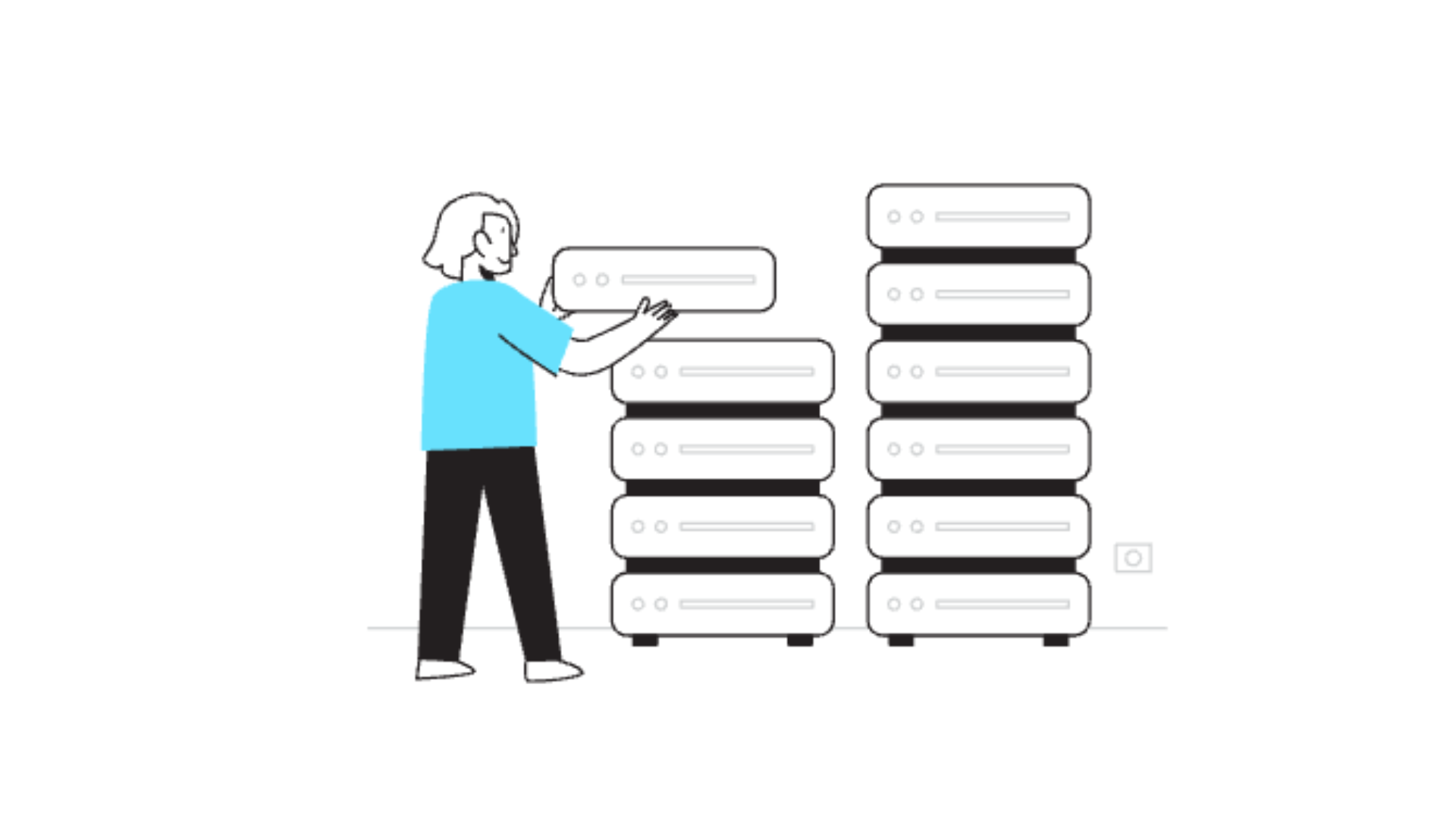5 Common Website Performance Issues and How to Fix Them

You’ve hired a team of well-proven graphic designers to come up with a killer homepage with an ongoing animation that plays on a loop.You’ve chosen the best possible font for the text. (And it mercifully isn’t comic sans.)You’ve added that robot chat thingy that pops up with a friendly prompt about rating the user experience.And yet, your visitors come for a moment or two, glitch out, and leave soon after without as much as explaining their grief to the homepage chatbot guy named Ryan.
Could it be that there is an ulterior problem with your website’s performance that is not immediately visible? Are you being hacked by an unfriendly foreign government agency? Is your website speed criminally bad because of the cool but ultimately resource-draining homepage animation?Website performance issues can throw a major spanner in the works of even the best websites. If not addressed, these small chinks in the armor of your online presence can mean fewer visitors, a decreased number of leads, and less revenue funneled to your business.In the passages below, we’ll talk about the five most common website performance issues and what you can do to fix them.Without further ado, here’s the deal.
Diagnosing Website Performance Issues: What Does Poor Performance Look Like?
As an Internet-browsing aficionado, or a user looking for a particular product, service, or piece of info on the wavy waters of the World Wide Web, you will certainly know a website performance issue when you see one.Just imagine: You’ve seen a friend sport a new pair of awesome sunglasses he bought off the Internet and now you want a pair, too. You go to the website from a link he sent you, you visit the page, start looking at different models, you click on the pair of shades that you feel will match your personality, and then… nothing happens.The website froze, and as far as you can tell, it isn’t coming back to life.Now, no matter how much you wanted those glasses, you face the cold, hard truth of Internet-based commerce—the attention span and patience of the average visitor is notoriously low. After a minute or two of trying, even the most stubborn of sunglasses collectors will likely give up.
When diagnosing website performance issues, you need to see your website through the eyes of a third-party, unbiased visitor, but this is not always easy. Here are a couple of telltale signs of poor website performance that you can notice straight away:
Slow loading speed: …can hamper even the most prospective of all leads. No one nowadays has time to wait around for a website to load forever.SEO-unfriendly content: For better or worse, the way the Internet works is that content is only recognizable to users if it contains the words they typed in when they were searching for it. Adding appropriate keywords throughout your content is essential for ensuring it gets picked up by the search engine. Boring or outdated content: Putting up engaging content on your website is essential to keeping the visitors who already clicked on one of your links. Getting someone to click on a link is one thing, but keeping them around is a completely different kettle of fish. Boring content can chase away even the most interested customer, so make sure your stories are interesting and up-to-date.Mobile incompatibility: The world of the Internet is increasingly mobile—from gaming to banking, paying your bills, tracking your latest NBA game bet, you name it. By making your website mobile-friendly, you’re ensuring access to an enormous and rapidly-growing pool of potential customers that you would otherwise totally miss out on.Overly complicated sign-up process: Making the signup or an e-mail prompt quick to go through can be a great way to get a user’s email address without pestering them with boring surveys and never-ending pop-ups.
Fixing Website Performance Issues: 5 Most Common Problems & How to Solve Them
Website performance issues come in a wide variety of shapes and forms.From loading hiccups, out-of-nowhere 404’s, boring, outdated content, and a faulty mobile compatibility system—depending on the issue at hand, the fix can be as simple as patching up a piece of errant code, or as complex as rethinking your entire content strategy. Here are some of the most common website performance issues with some ideas for how to solve them.
1) High Visitor Exit Rates High exit rates of your visitors can be thought of like an umbrella term; it can describe a whole host of potential problems that send your visitors running. More often than not, the underlying problems that cause visitors to leave would fall into one of the three following categories:
The site layout is difficult to use.The design is confusing and of poor quality.The content is outdated, irrelevant, or boring—or worst of all, all three.
The fix:
Permanent website monitoring and testing by an impartial third party is a must. Additional techniques such as using funnel analytics, and collaborating with your customer support representatives to harvest visitor feedback, can also contribute massively to the overall website performance. Here’s an article covering top website monitoring tools that can help!
2) Low Search Ranking
If your website content is not optimized for search engines, all of your good intentions, valuable pieces of info, and cutting-edge products or services might simply go unnoticed. A website with great content and merchandise but no SEO presence is like a major supermarket in the middle of nowhere with no billboards or commercials informing potential visitors of its existence.The fix:Incorporating SEO into not only your written-word content but your website landscape at large is an absolute must. To ensure you’ll have a competitive edge over the other websites in your niche, ensure that all of your content features relevant keywords. Meta tags, exciting and attractive article headers, and even URLs can be optimized for search engines. Also, make sure your website is indexed and that you post new content on it regularly.
3) Security Issues
Laggy landing pages, ugly homepage animations, and annoying chatbots that won’t go away are one thing.Getting your credit card info stolen from a website you thought you could trust, on the other hand, is an entirely different problem that can destroy your business in ways you can’t even imagine.Despite what many people think, hackers will attack small websites just as frequently as they will attempt to take advantage of large supermarket chains and online government vote-counting bots. (That’s why it’s essential to invest in the services of top cybersecurity companies in Dubai for the best protection.)
The fix:To prevent potentially devastating security breaches, investing in your website’s security by subscribing to a web-security service that will conduct cloud monitoring of your online premises, remove breaches, and quickly identify threats, is crucial.Neglecting to address potential security issues in the future can mean dealing with a series of headaches down the road, so investing small sums of money early on when security is in question is always better than ending up having to pay an arm and a leg to a subscriber who got their credit card info stolen due to your faulty website.
4) Poor Web Design
Representing another complex umbrella term when it comes to websites, ‘web design’ refers to the subtle art of making your website both functional enough to provide value to visitors and fun enough to attract them in the first place.Poor web design typically looks like poorly thought-out landing pages, boring graphics, unimaginative logos, and unintuitive user experience.
The fix:To fix poor website design, you might need to utilize the help of experts from several different fields. Graphic designers can help you make the website more attractive.Programmers can make it more user-friendly and help visitors gain access to other parts of your website more easily with the help of hamburger menus, quick links, and other means. By prioritizing strategic brand-first web design, you ensure that these changes not only improve functionality but also reflect your brand’s unique identity, creating an engaging experience that keeps visitors coming back. Scheduling some time to dedicate to tackling the already existing issues on your website can save you the time you’d expend fixing any future mistakes.
5) Faulty Pages and Void Redirects
Getting all excited about purchasing a piece of rare sports memorabilia online, or reading up on new developments in the world of global politics, only to discover that the page you clicked on and hoped to visit is void and only showcases the annoying 404 error message, can be a truly frustrating experience.So frustrating, in fact, that it can lead to visitors leaving the page and not returning to the website. Google and other search engines don’t look too favorably on websites with faulty pages, either. Have your website display one too many 404’s and the engineers at Google will display your website less often.
The fix:Using advanced website crawling programs, aim to discover and fix the pages displaying error messages before visitors can stumble upon them.Checking for broken links is another important part of maintaining your website’s vitality. Last but not least, updating your 404 error pages so they are more user-friendly and informative can help facilitate the browsing experience for your visitors and make it less likely for them to scram after chancing upon a 404.
Conclusion
All in all, fixing an ailing website is a process that typically requires a comprehensive, multi-pronged approach. At WebFixTool, we are more than ready to unpack our programming, troubleshooting, and code-making tackle box and lend you a helping hand, some know-how, our lures, flies, and worms… well, you get it by now. As one fisherman would to another, we’ll help you catch new visitors (and potential customers) hook, line, and sinker. We will also give you a hand in reeling them in! Depending on what the immediate problem is, fixing it can be as easy as updating a couple of old posts that are no longer relevant. On the other hand, it can mean having to overhaul the entire layout of the homepage, landing pages, and every other page across the site.Whatever the current issue, consistent monitoring, troubleshooting, and listening to visitor feedback are great ways to detect and engage with problems before they can snowball into something more serious.



